
Pompeii, the ancient Roman city frozen in time, offers a haunting glimpse into the past. Buried under volcanic ash from Mount Vesuvius in 79 AD, its preserved streets, homes, and artifacts reveal the daily lives of its people — and their tragic demise. This blend of terror and fascination draws millions each year, eager to explore the ruins and uncover the stories of a city abruptly silenced by nature’s fury.
Daily Life in Pompeii
Life in Pompeii was vibrant and noisy, filled with the hustle of merchants, bakers, and artisans. The scent of freshly baked bread mingled with the tang of fish sauce from market stalls, while lively conversations and occasional shouting matches echoed through the narrow streets. Lavishly decorated homes showcased the wealth of some citizens, while public spaces buzzed with social activity.

Pompeians loved their leisure time, flocking to bathhouses, theaters, and wine-soaked feasts. The city thrived on a blend of hard work and indulgence. Yet, all this unfolded under the silent gaze of Mount Vesuvius.
Vibrant Markets and Trade
Pompeii’s markets were the heart of the city, bustling with vendors selling everything from olives to exotic spices. Shoppers haggled over prices while inspecting fresh produce, handmade pottery, and luxurious fabrics imported from distant lands. The Forum, the central marketplace, was not just about buying goods but also about catching up on gossip or sharing the latest news from Rome.

Trade routes brought goods and culture from across the empire, turning Pompeii into a melting pot of flavors and ideas. Amid the chaos, merchants perfected their sales pitches, sometimes with exaggerated claims.
Art and Murals of Pompeii
Pompeii’s walls were its storytellers, adorned with stunning frescoes that depicted mythology, nature, and everyday life. Wealthy residents flaunted their status by commissioning elaborate murals to decorate their villas. Common themes included Dionysian parties, idyllic landscapes, and scenes of domestic bliss — sometimes more idealized than real!

Even public spaces displayed vibrant art, from tavern walls showing cheeky graffiti to temples with intricate mosaics. These preserved masterpieces give us a colorful window into the tastes and creativity of Pompeians.
Pompeii’s Social Classes
From elite aristocrats to humble slaves, Pompeii’s social structure was as layered as its volcanic ruins. The wealthy lived in grand villas with atria and private gardens, while the working class resided in modest apartments or workshops. Slaves, though integral to the economy, lived under strict conditions and had little personal freedom.

Despite the divides, Pompeii’s streets brought people together. Aristocrats might pass freedmen running shops, while slaves carried goods to market. Social mobility, though rare, was possible — many freed slaves became successful merchants, proving that even in Pompeii, life could take surprising turns.
Entertainment in Ancient Pompeii
Pompeians loved a good spectacle, and their theaters and amphitheaters were always buzzing with excitement. Gladiator matches drew massive crowds eager to cheer — or jeer — the combatants. Plays, often comedies or tragedies, entertained the masses with dramatic flair and occasional bawdy humor.
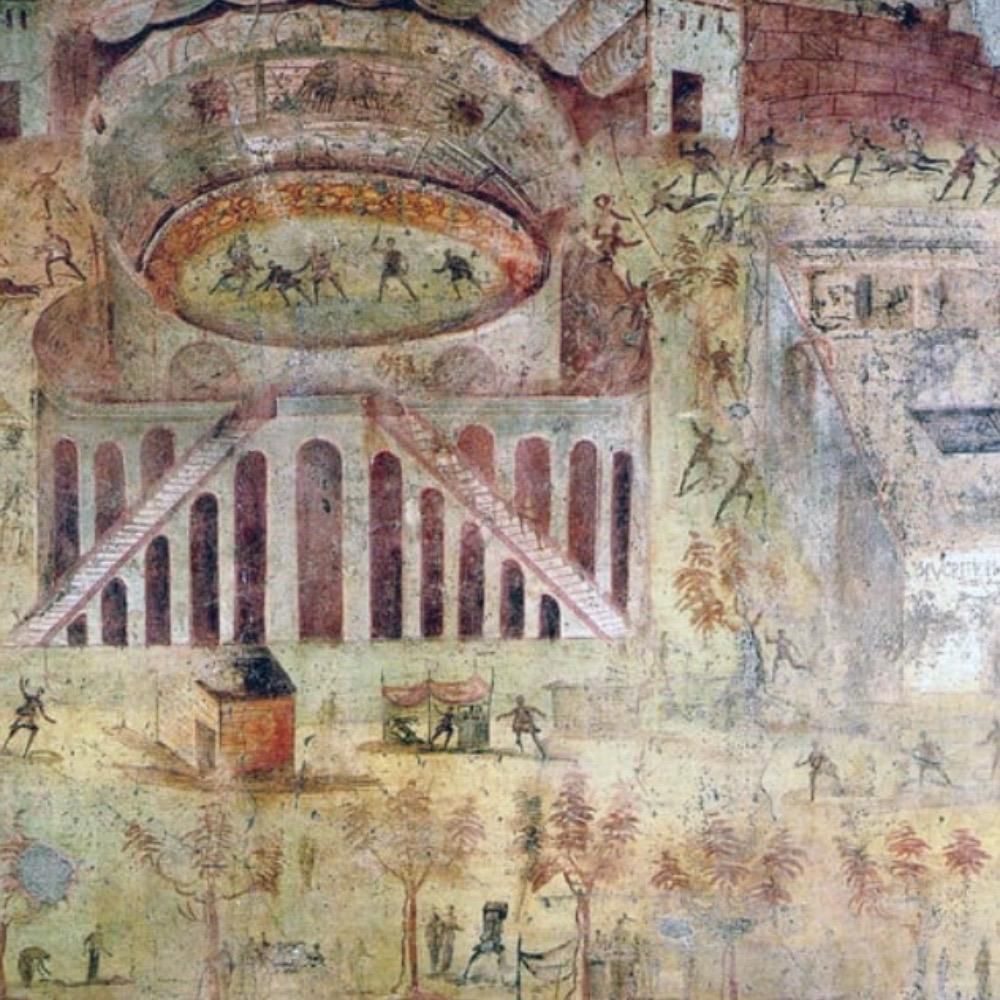
Street performers also captivated passersby with acrobatics, music, or magic tricks. Even the city’s taverns became impromptu entertainment hubs, with heated dice games and lively debates. Life in Pompeii wasn’t just about survival — it was about finding joy, laughter, and perhaps a little drama in every day.
The Forum: City Center
The Forum was the beating heart of Pompeii, where politics, religion, and commerce collided. This open-air plaza was a hub for debates, religious ceremonies, and market stalls offering everything from bread to bronze. Citizens gathered here to hear political announcements or simply catch up on local gossip.

Flanked by grand temples and administrative buildings, the Forum reflected the city’s wealth and importance. Whether you were a senator or a street vendor, the Forum was the place to see and be seen. It was Pompeii’s social media — minus the hashtags and selfies!
Baths: A Roman Luxury
Pompeians took bathing seriously — perhaps more seriously than anything else! The city’s bathhouses weren’t just for hygiene, but were social hotspots where people mingled, gossiped, and even conducted business. Facilities included hot, warm, and cold baths, with underfloor heating showcasing Roman engineering genius.
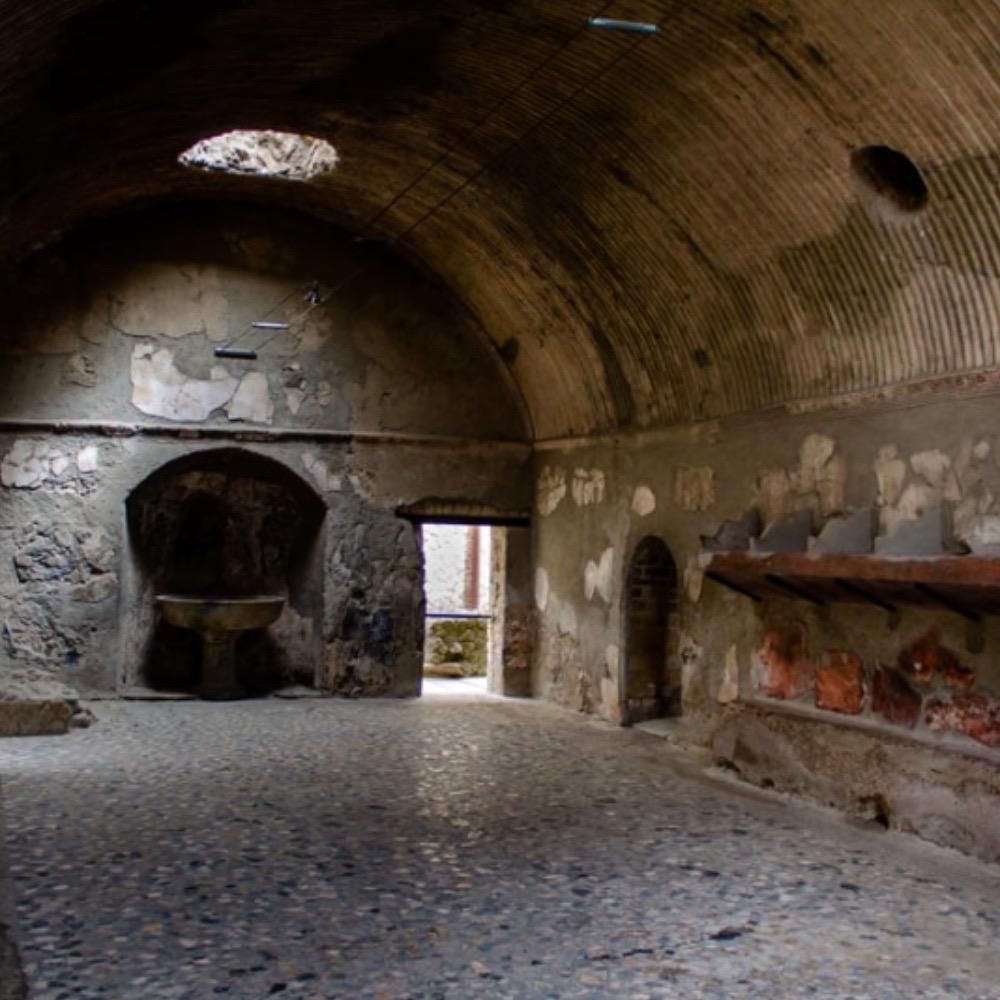
Rich or poor, everyone enjoyed this daily ritual. While the wealthy splurged on luxurious bathhouses, even public baths were well-equipped. It was the perfect place to relax, network, or simply escape the stresses of Roman life — like debating whose turn it was to bring the wine to dinner.
Religion in Pompeii
Pompeii was deeply religious, with gods and goddesses influencing every aspect of life. Temples dedicated to Jupiter, Apollo, and Venus dotted the city, serving as spiritual and community hubs. Household shrines honored deities and ancestors, ensuring divine blessings on daily activities.

Festivals brought the city to life with parades, sacrifices, and feasts. Religion wasn’t just a duty — it was woven into the fabric of Pompeii’s identity. Even graffiti referenced prayers and offerings, proving that spirituality thrived alongside markets and theater performances.
Pompeii’s Stunning Architecture
Pompeii’s architecture showcased Roman innovation and artistry. From grand villas with open atria to practical multi-story apartments, the city’s buildings balanced functionality with beauty. Intricate mosaics, marble columns, and colorful frescoes adorned many interiors, highlighting Pompe ians’ appreciation for aesthetics.
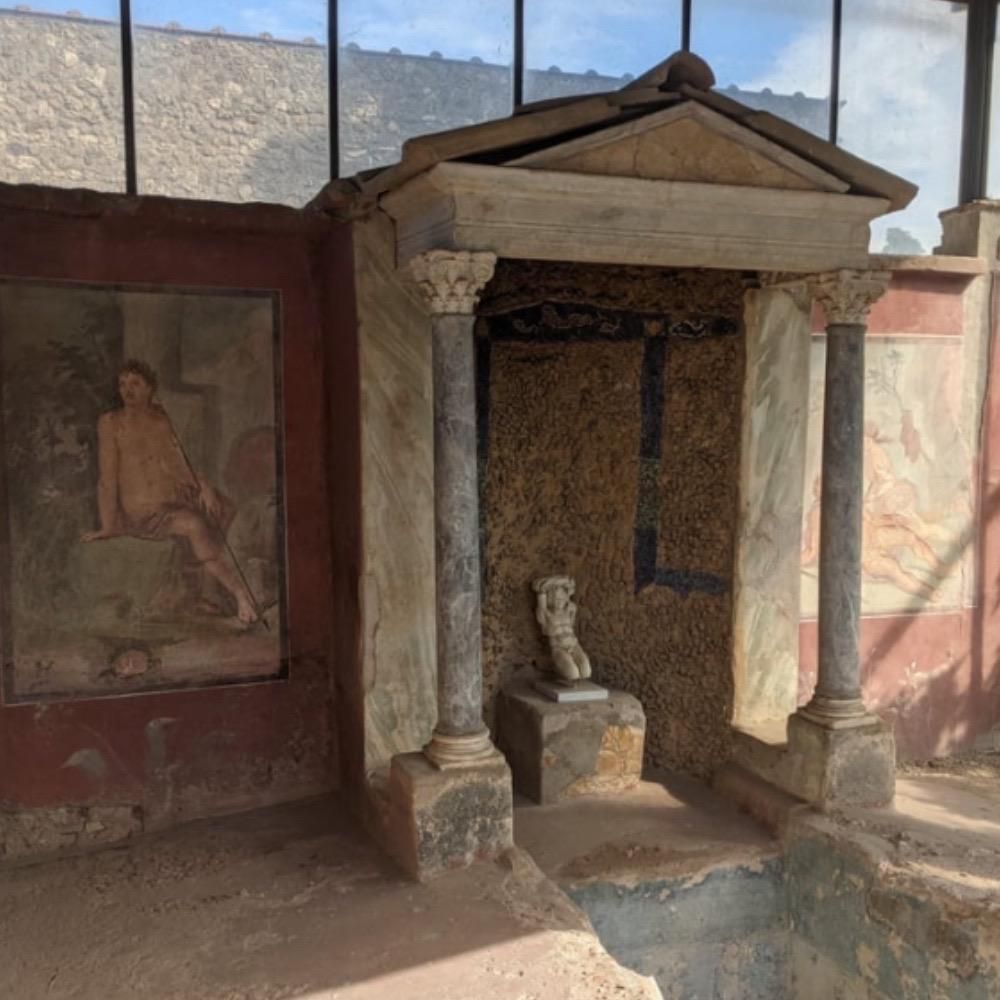
Public buildings like temples, bathhouses, and theaters displayed engineering brilliance, reflecting the city’s status and wealth. Walking through Pompeii today feels like stepping into an ancient blueprint of urban design, complete with cobbled streets and sophisticated drainage systems.
Mount Vesuvius: A Looming Threat
Mount Vesuvius loomed silently over Pompeii, its majestic peaks blending seamlessly into the landscape. To the people of Pompeii, it was just another part of their idyllic surroundings, a mountain offering fertile soil and a picturesque backdrop. Little did they know, this “gentle giant” harbored a catastrophic secret. Despite occasional tremors, Pompeians lived their lives with little concern for volcanic dangers.
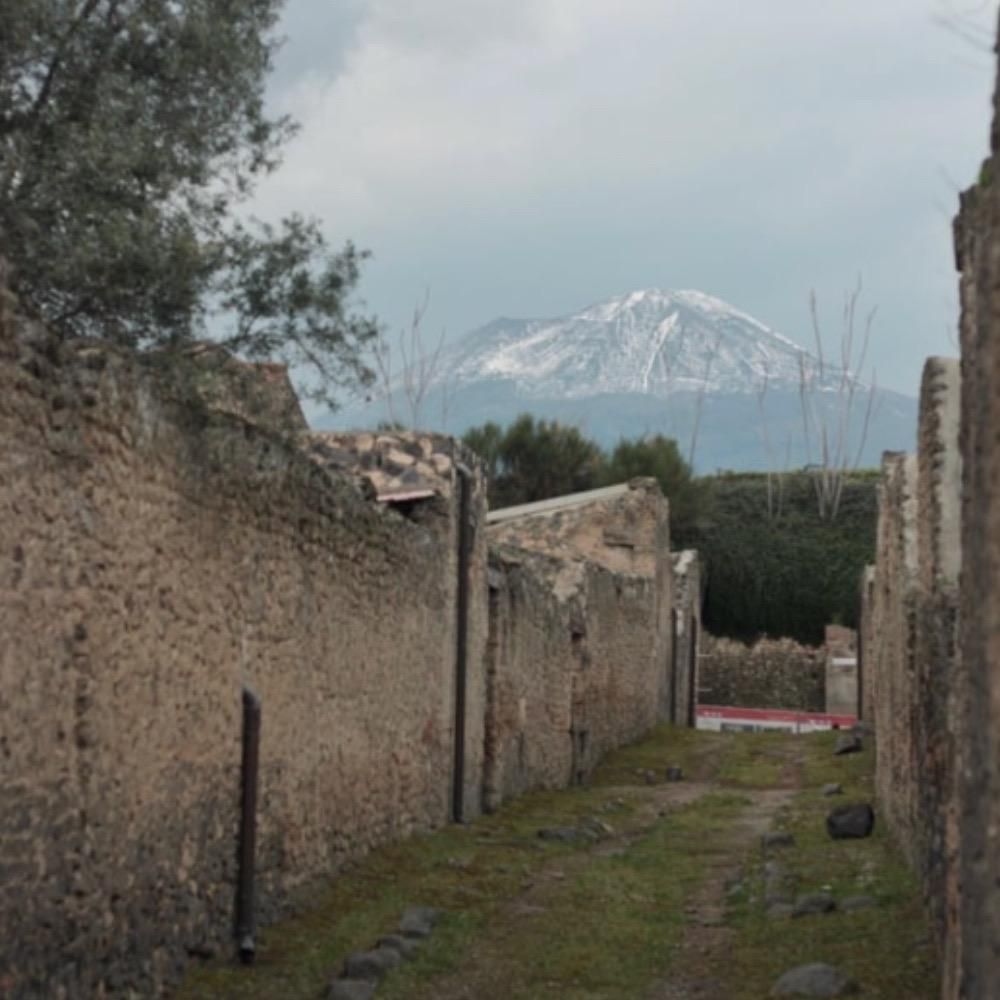
The lack of understanding about such natural phenomena made Vesuvius’s eventual eruption a shocking and devastating event. In hindsight, the mountain’s quiet presence was less serene and more foreboding — a silent countdown to disaster.
The Day Vesuvius Erupted
The eruption of Mount Vesuvius in 79 AD turned a vibrant city into a deathly silence. It began with a massive plume of ash and pumice shooting miles into the sky, blanketing Pompeii in darkness. Residents fled in chaos, their streets choked with falling debris.
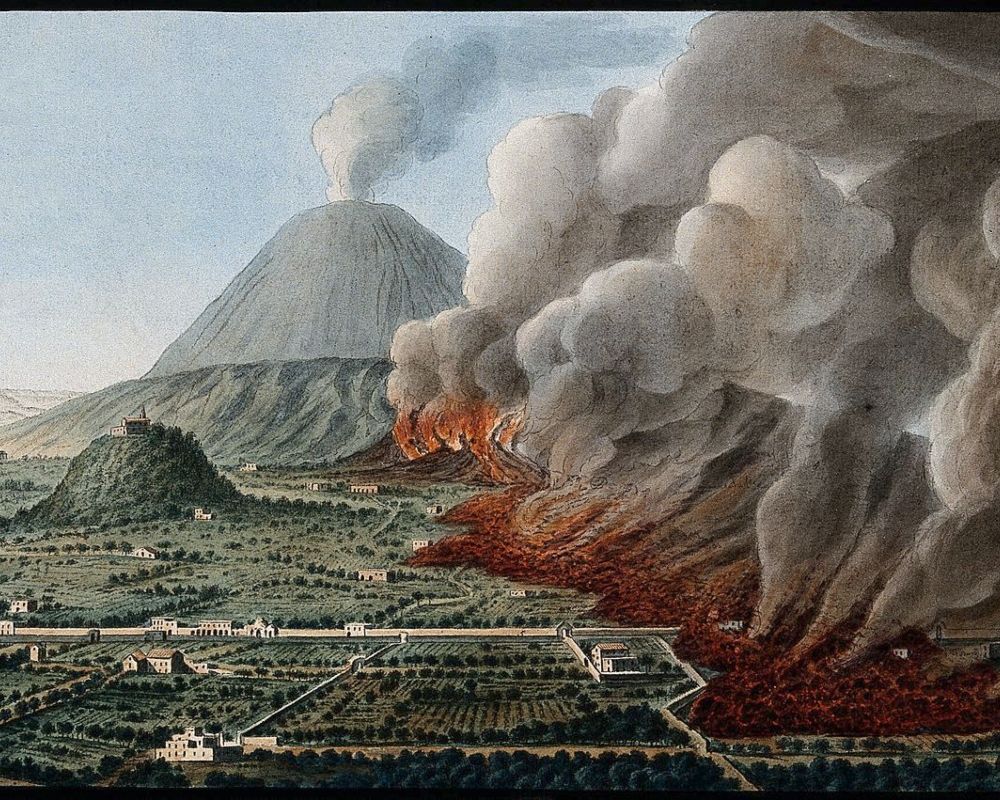
Pyroclastic flows, waves of superheated gas and ash, swept through the city, sealing its fate. Those who remained were forever preserved in haunting detail, caught mid-motion by the volcanic surge. It was a day of unimaginable terror, transforming Pompeii into an archaeological time capsule.
Escaping the Ash Cloud
When the skies darkened and ash began to rain down, panic gripped Pompeii. Many fled toward the coast, hoping to find safety on the water. Others sought refuge in their homes, believing the storm would pass. Unfortunately, the relentless onslaught left few places to hide.
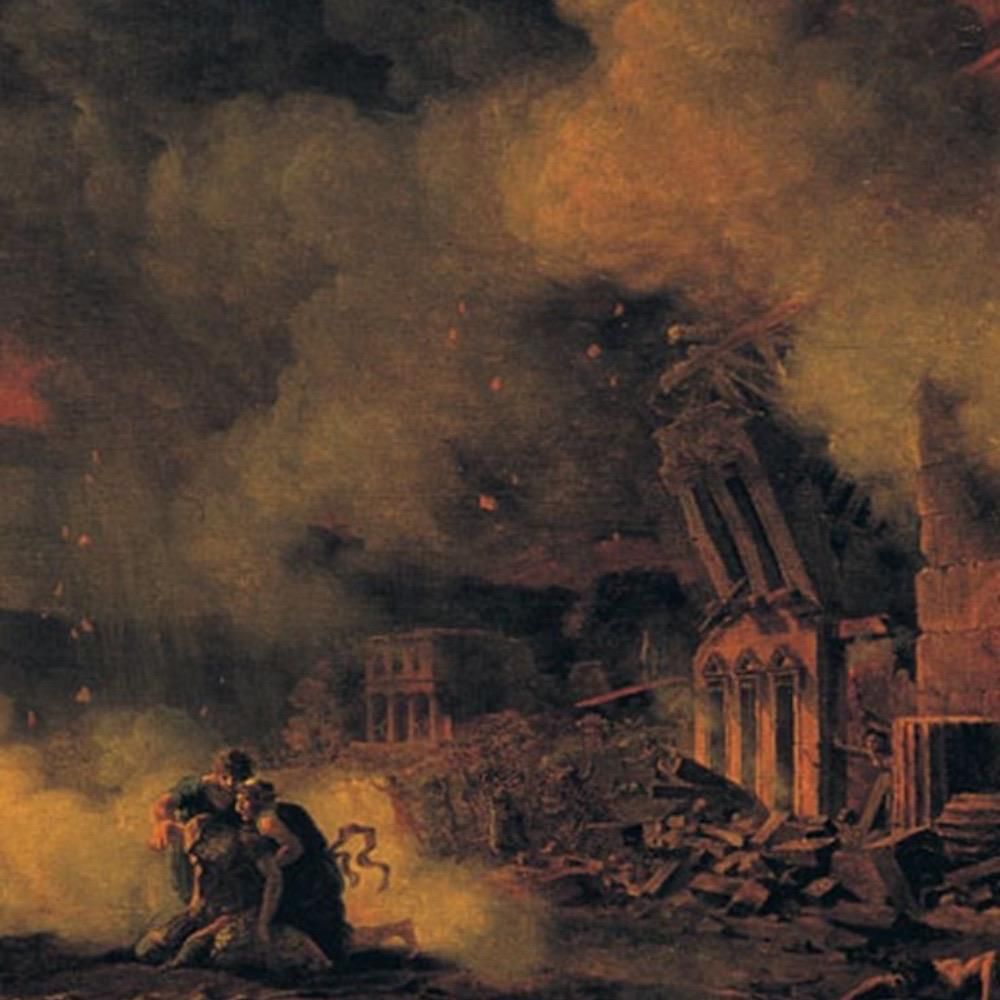
Survivors’ accounts, like Pliny the Younger’s letters, describe the chaos vividly. Some managed to escape to neighboring towns, but for most, there was no escape from the suffocating ash and the fury of Vesuvius. Their frantic decisions paint a poignant picture of humanity facing the wrath of nature.
Preserved in Volcanic Ash
Pompeii’s tragic burial in volcanic ash became its salvation for posterity. The thick layers of ash acted like a time capsule, preserving buildings, artifacts, and even the remains of its people. Streets, temples, and homes remained eerily intact, offering a rare snapshot of Roman life.
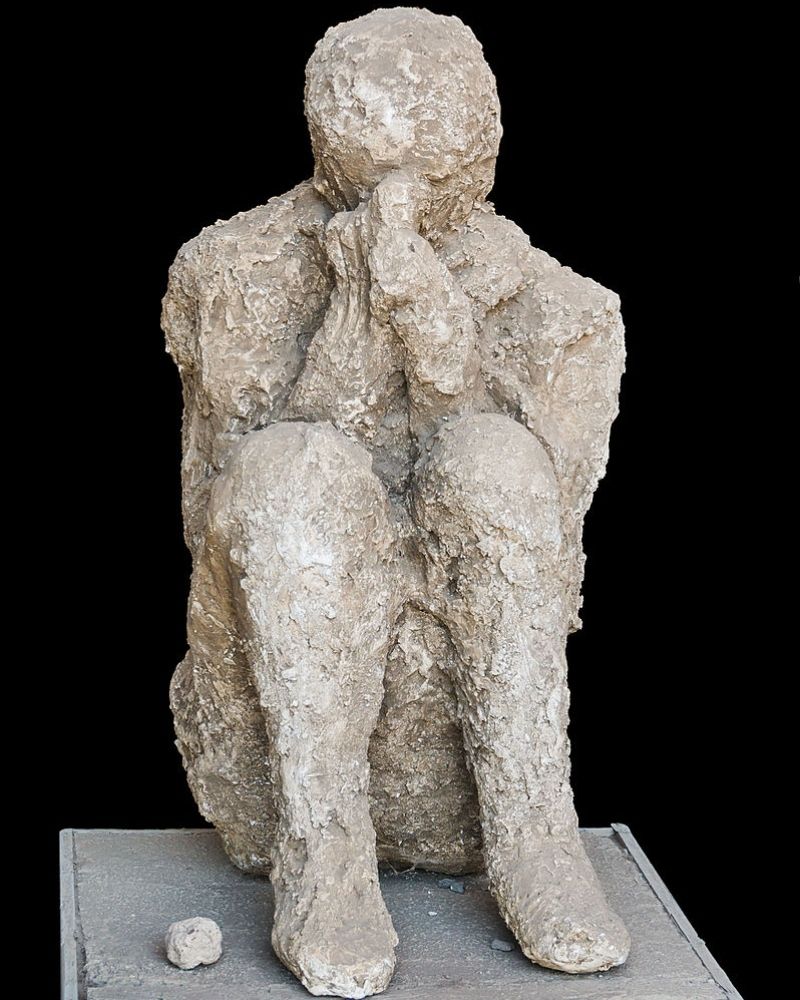
The ash also preserved everyday items like bread, tools, and graffiti, giving archaeologists unparalleled insight into Pompeii’s culture. What was once a bustling city became a frozen tableau of human activity, forever captured in its final moments.
Rediscovering Pompeii’s Ruins
Pompeii lay hidden beneath volcanic ash for nearly 1,700 years before its rediscovery in the 18th century. Early excavations were less about archaeology and more about treasure hunting, with artifacts whisked away to royal collections.
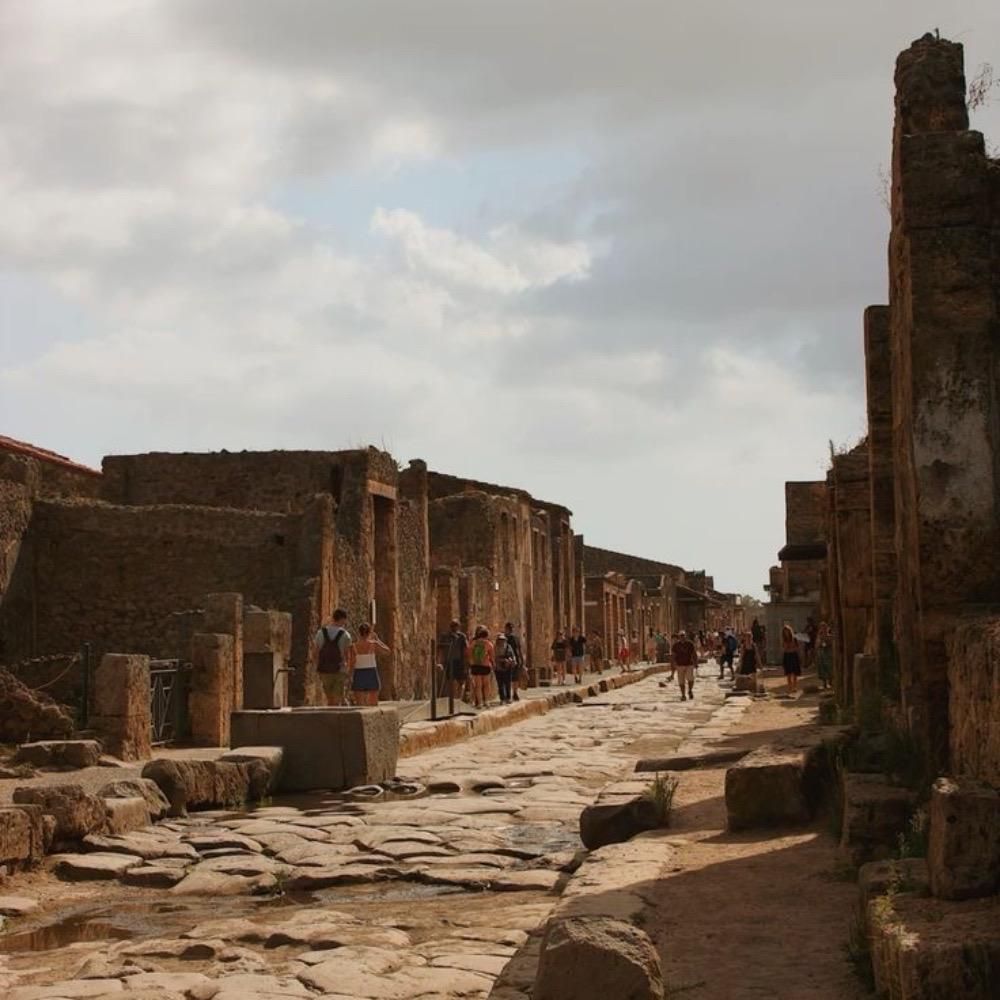
Over time, systematic digs revealed a city frozen in tragedy. Streets, frescoes, and human casts emerged, offering an unparalleled glimpse into Roman life. Today, ongoing excavations to uncover secrets, making Pompeii a place of endless discovery — and a reminder of the delicate balance between life and nature.
Pompeii’s Human Casts
One of Pompeii’s most haunting discoveries was the creation of plaster casts of its victims. These casts captured the final moments of people and animals, frozen mid-struggle as they succumbed to the volcanic surge. Their poses — some clutching loved ones, others shielding themselves — tell heart-wrenching stories of desperation.

The casts aren’t just archaeological artifacts; they’re windows into human resilience and tragedy. Seeing these lifelike forms in their ashen tombs is a chilling yet profoundly moving experience, reminding visitors of the fragility of life in the face of nature’s fury.
The Streets of Pompeii
Pompeii’s streets were the veins of the city, bustling with carts, pedestrians, and vendors. Cobblestone paths featured distinct grooves worn by centuries of wagon wheels, while stepping stones allowed pedestrians to cross without dirtying their sandals.
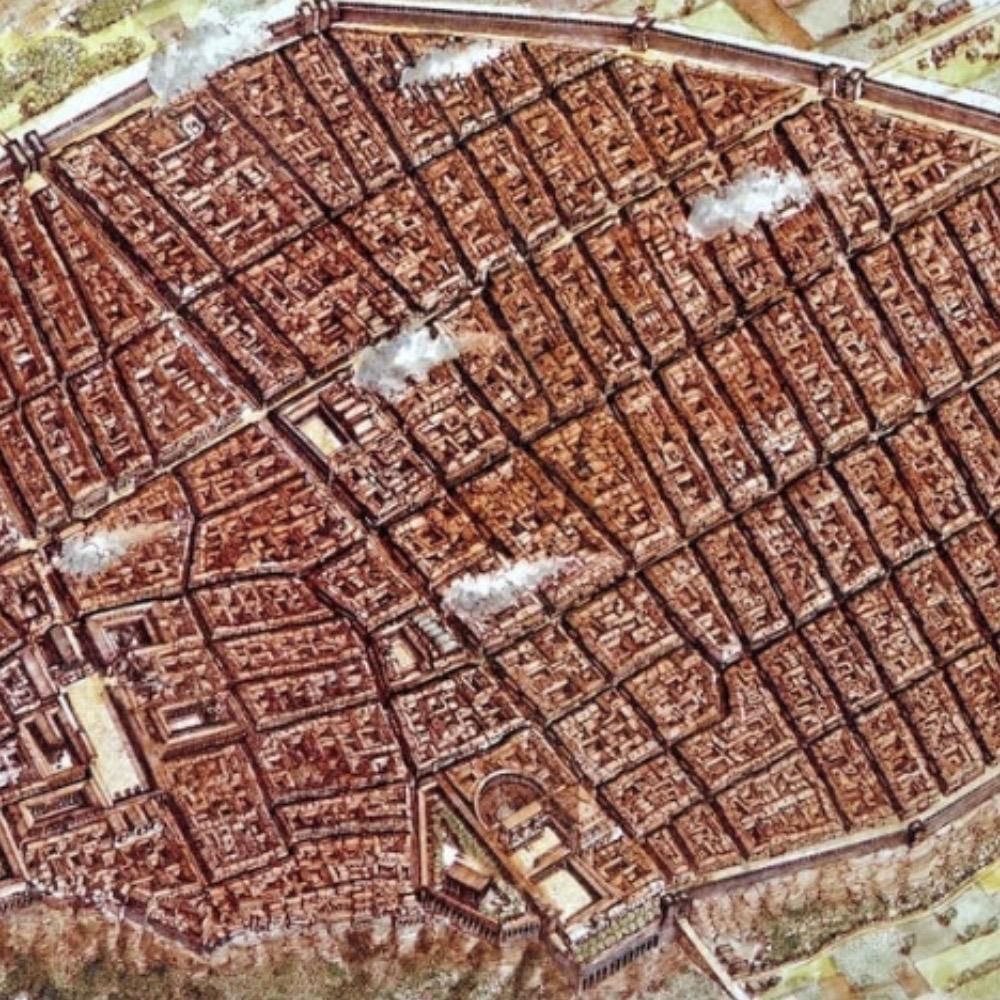
Graffiti adorned the walls, ranging from political slogans to cheeky jokes. Taverns and shops lined the streets, offering food, drink, and goods to passersby. Walking Pompeii’s streets today feels like stepping back in time, with every stone whispering stories of a once-thriving city.
Homes Frozen in Time
Pompeii’s homes were as diverse as its people, ranging from humble dwellings to sprawling villas. Wealthy residents decorated their homes with lavish mosaics, fountains, and frescoes depicting mythological scenes or pastoral landscapes. Atria and gardens added to their charm.
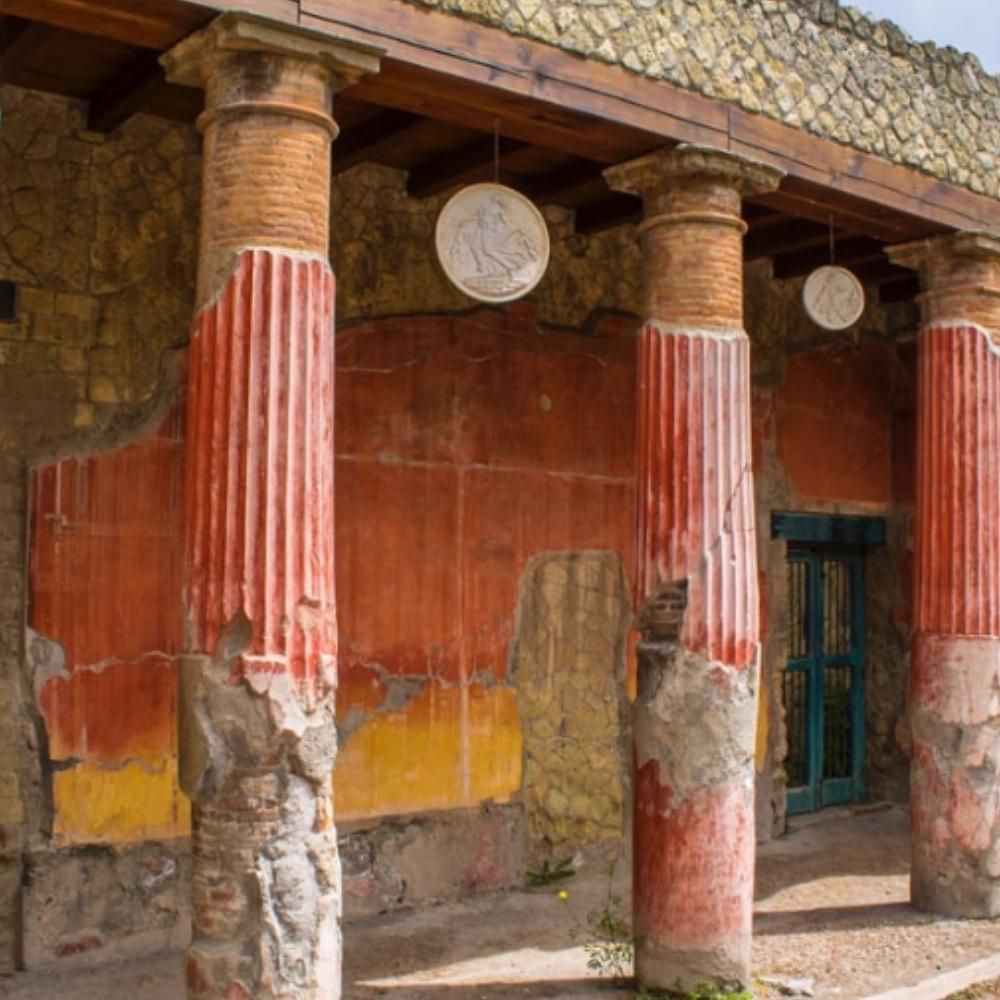
Even the simplest homes provide insight into daily life, with preserved kitchens, furniture, and household items. Stepping into these spaces feels like visiting a friend who just stepped out — a surreal reminder of lives interrupted mid-routine.
Preserved Temples and Shrines
Pompeii was rich in spirituality, with temples and shrines scattered throughout the city. The Temple of Jupiter dominated the Forum, while smaller temples honored Venus and Apollo. Even homes had a lararium — small shrines for household gods.

These sacred spaces were adorned with statues, altars, and offerings. They reveal the deep connection Pompeians had with their faith, seeking guidance and protection from their gods. Ironically, even divine favor couldn’t save the city from Vesuvius’s wrath.
Frescoes of Pompeian Life
Pompeii’s frescoes are vibrant windows into the city’s soul, capturing its mythology, daily routines, and flair for beauty. Wealthy homes boasted elaborate wall paintings depicting gods, nature, and even romantic or risqué scenes. Public spaces weren’t left out, with lively murals gracing taverns and bathhouses.

These frescoes are surprisingly relatable — showing everything from luxurious feasts to a fisherman’s simple life. They’re not just art; they’re stories frozen in time, painted with bold colors that have miraculously endured. The humor and humanity of these pieces remind us that Pompeii’s people weren’t so different from us.
Tools and Artifacts Found
The tools and artifacts unearthed in Pompeii tell the story of a city at work. Blacksmiths’ hammers, farmers’ plows, and bakers’ bread molds showcase the craftsmanship that fueled its economy. Even delicate items like jewelry and perfume bottles offer glimpses of everyday life.
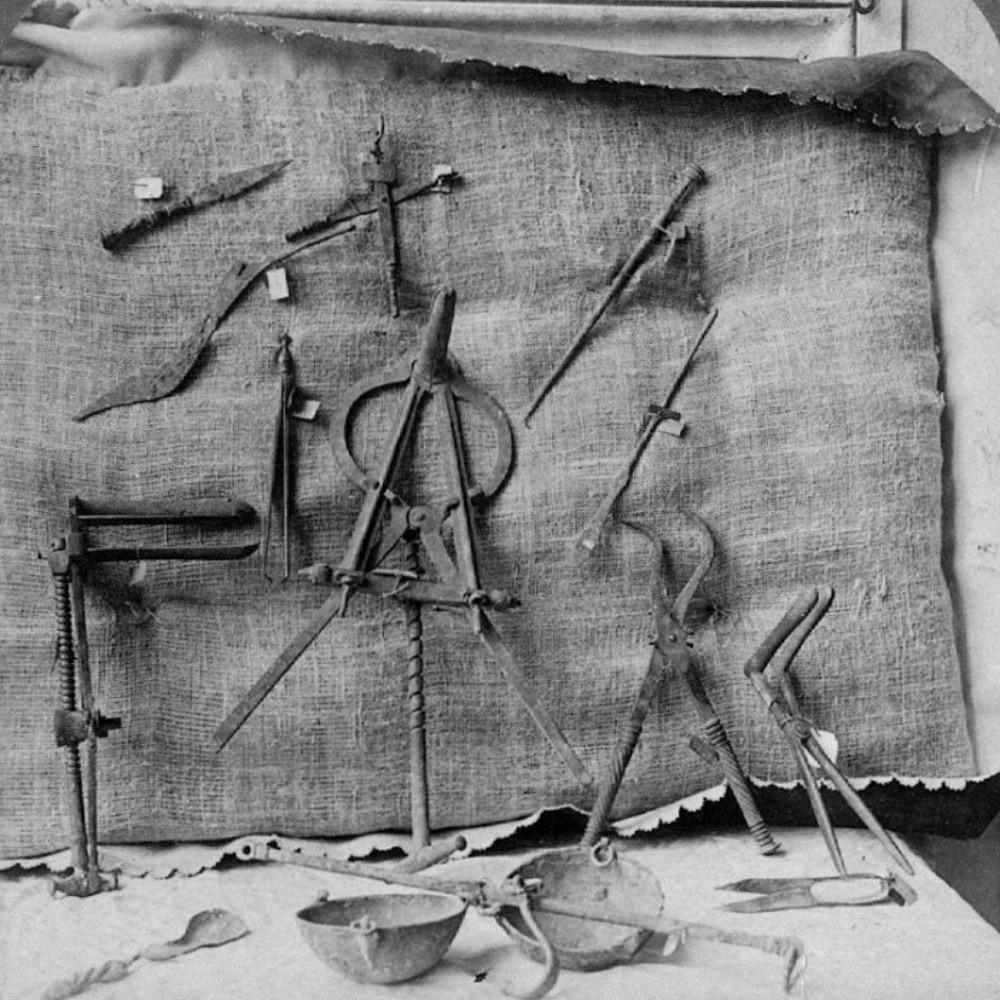
What’s striking is how advanced these tools were. From medical instruments to intricate locks, Pompeii’s residents were innovators. Holding these items today feels like shaking hands with history — except history might remind you to return that borrowed hammer!
Pompeii’s Role in Roman Economy
Pompeii was a bustling trade hub, thanks to its fertile soil and prime location near the coast. The city exported wine, olive oil, and fish sauce, all highly prized across the Roman Empire. Merchants thrived here, making Pompeii an economic jewel in the Roman crown.
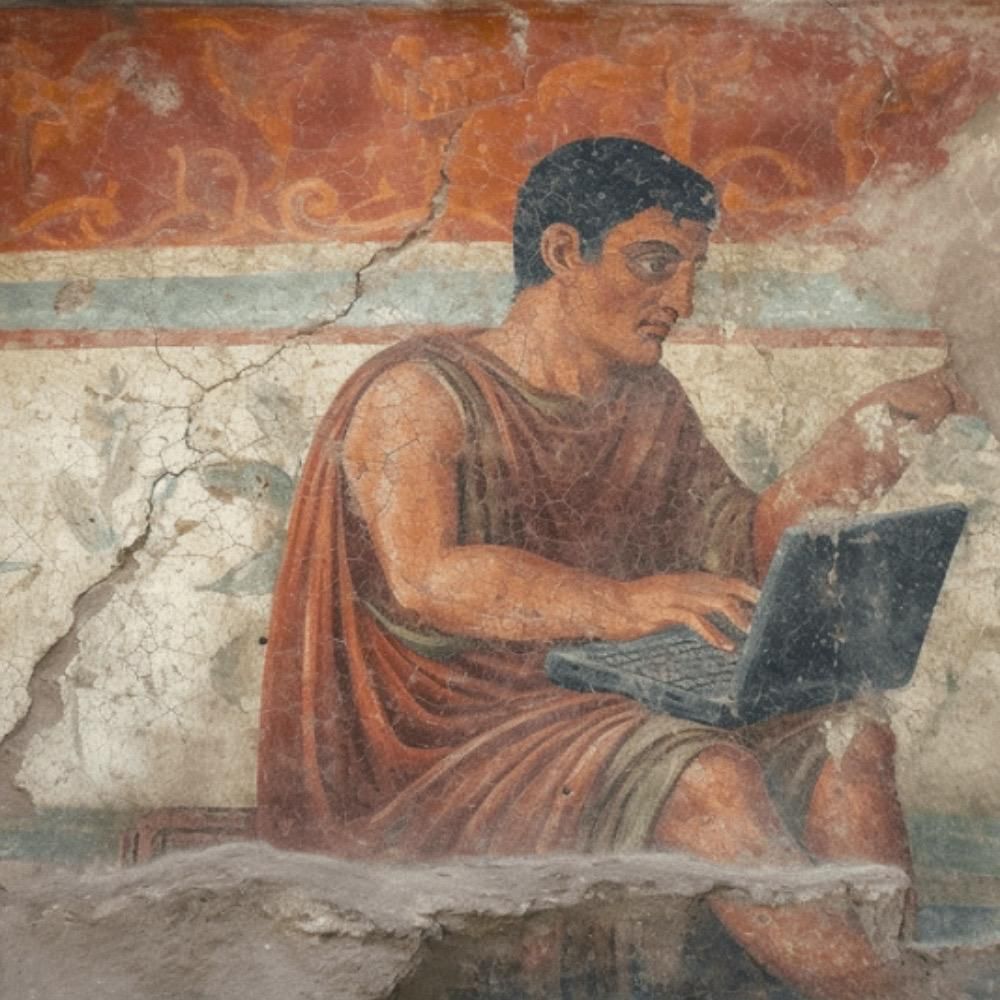
Its markets were alive with transactions, from local farmers selling produce to traders dealing in luxury goods. Pompeii wasn’t just a city; it was a vital cog in the Roman machine, blending commerce with culture in a way that kept its economy thriving.
Advanced Plumbing Systems Revealed
Pompeii’s plumbing was ahead of its time, with aqueducts delivering water to fountains, baths, and private homes. Lead pipes, though problematic by today’s standards, were a Roman engineering marvel. Public baths and latrines showcased the city’s commitment to hygiene and convenience.
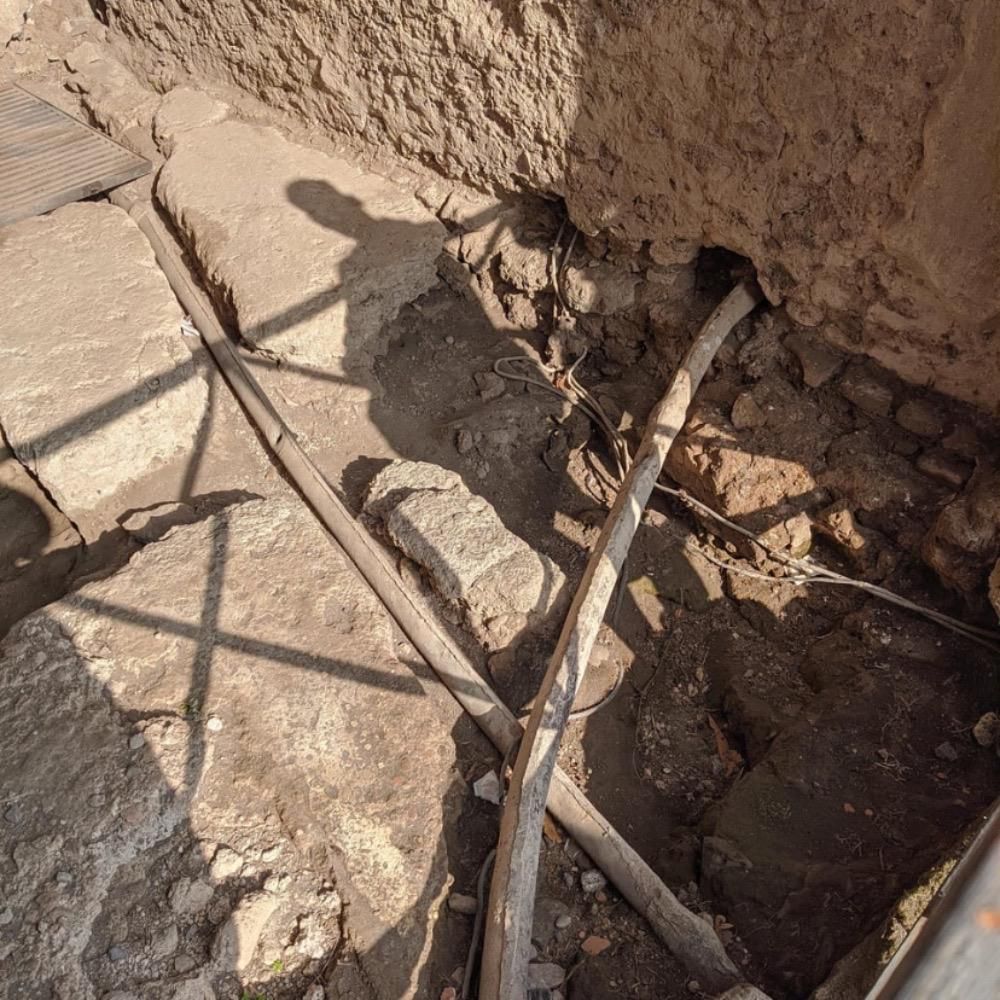
The sophistication of these systems highlights the ingenuity of Pompeii’s residents. Sure, they didn’t know about lead poisoning, but their focus on water access and sanitation remains impressive. Walking among these ancient pipes feels like touring the first drafts of modern infrastructure.
Theaters and Amphitheaters Discovered
Pompeii’s love for drama and spectacle was evident in its grand theaters and amphitheaters. Plays, both comedic and tragic, drew crowds eager for entertainment, while gladiator battles thrilled audiences with their raw intensity. These venues weren’t just places for leisure — they were cultural epicenters.
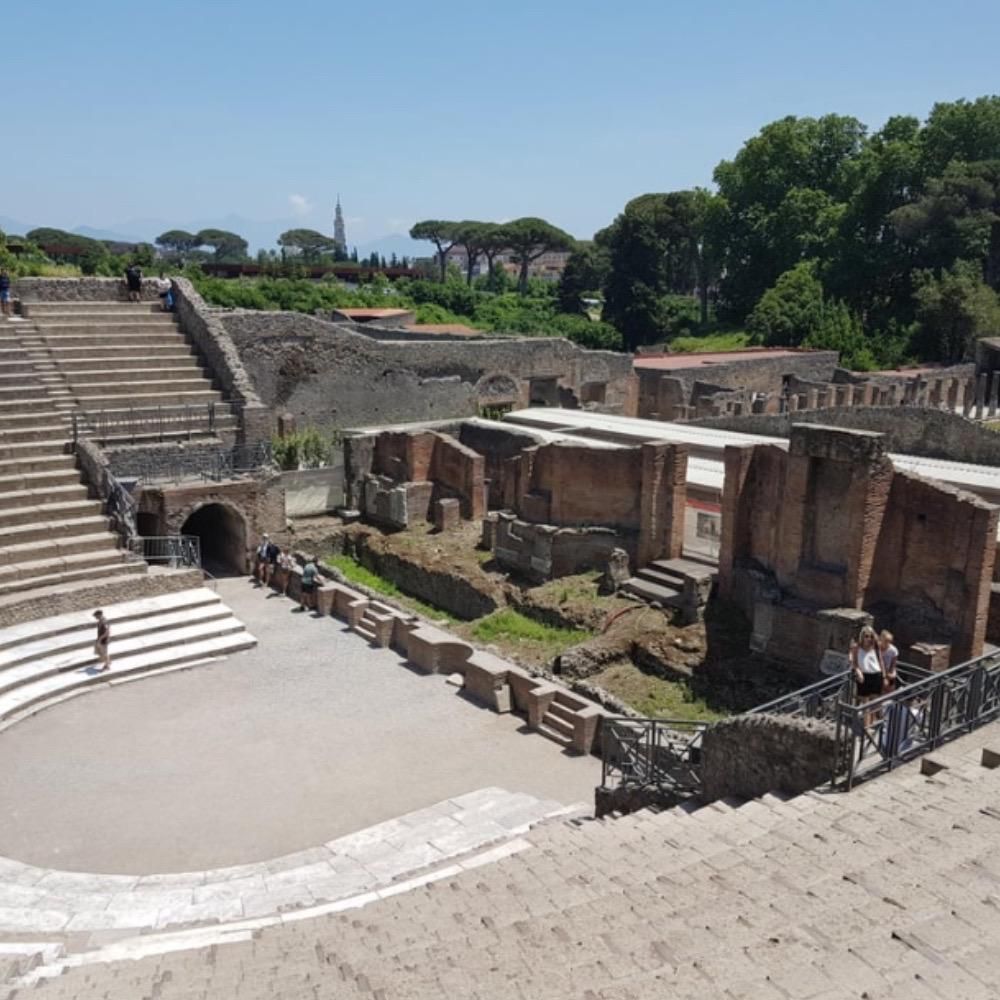
The amphitheater, one of the oldest in the Roman world, still stands as a testament to their architectural genius. Imagine the roar of the crowd as gladiators entered the arena, or the laughter echoing during a bawdy comedy. Pompeians knew how to put on a show!
Ancient Kitchens and Food
Pompeii’s kitchens reveal a rich culinary culture centered around fresh ingredients and bold flavors. Clay ovens, grinding stones, and cooking pots hint at meals of bread, fish, olives, and spiced stews. Taverns and street vendors catered to those too busy — or too lazy — to cook at home.
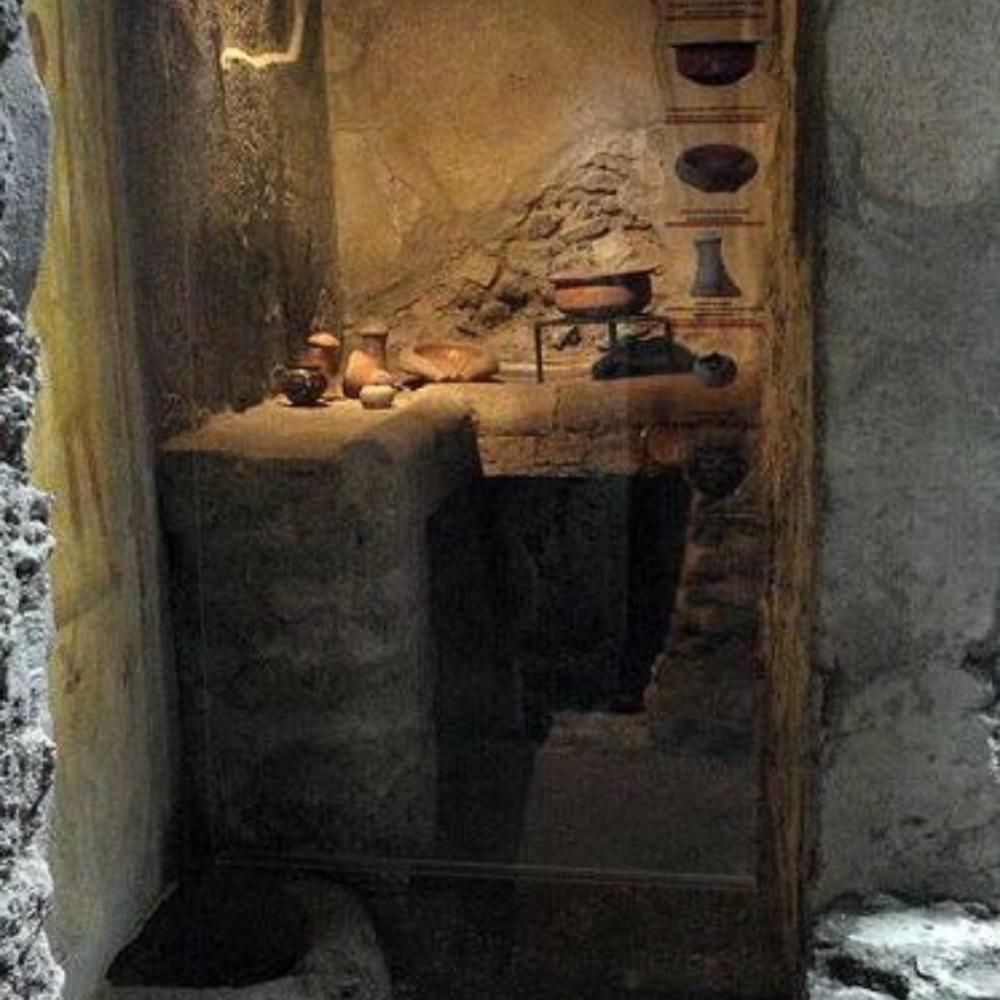
Even carbonized loaves of bread have been discovered, perfectly preserved by Vesuvius’s ash. It’s a poignant reminder of the lives cut short, and the meals left uneaten. From rustic recipes to luxurious banquets, Pompeians shared our universal love for food.
Jewelry and Personal Items
Pompeii’s jewelry and personal items reveal the style and identity of its people. Gold rings, intricate bracelets, and delicate hairpins were not just accessories — they were statements of status and taste. Even children wore charms to ward off bad luck.
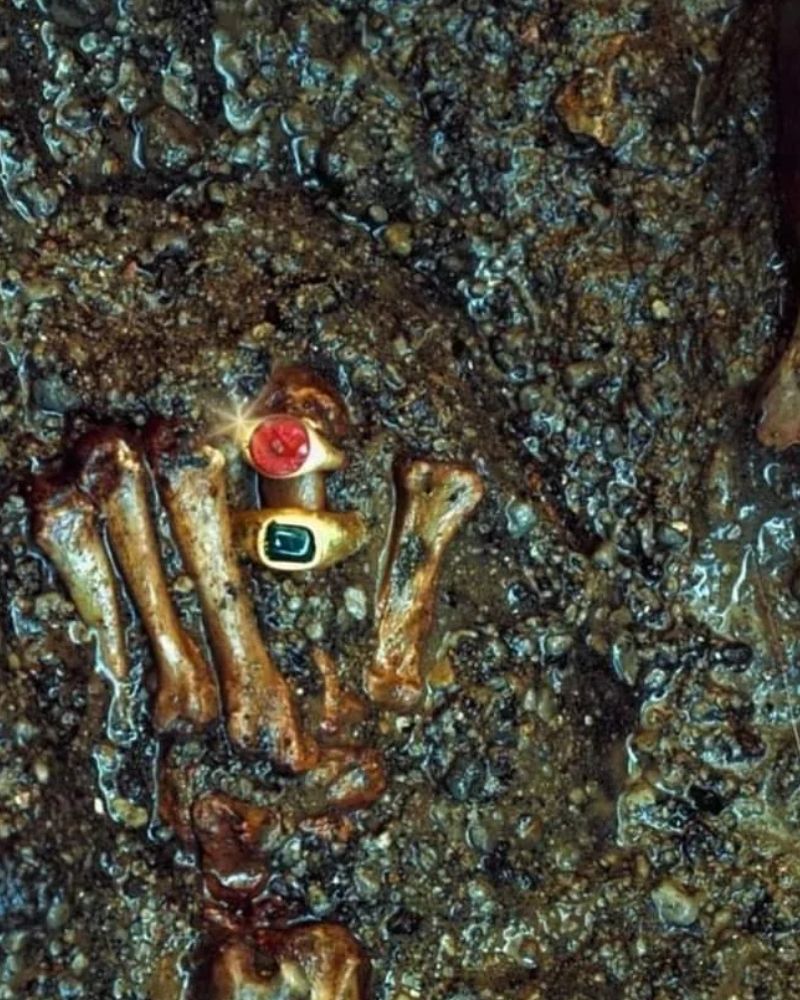
These artifacts bring a personal touch to Pompeii’s story. It’s one thing to see a grand villa, but another to hold a pendant someone cherished. These intimate details remind us of the humanity behind the ruins — proof that even 2,000 years ago, people loved to accessorize.
Hidden Messages in Graffiti
Pompeii’s graffiti is ancient social media at its finest. Scrawled on walls, these messages range from political endorsements to personal insults and declarations of love. Some are poetic, others downright crude — proof that humor and snark transcend centuries.

One famous piece reads, “I admire you, wall, for not collapsing under the weight of so much nonsense.” These writings give Pompeii a unique voice, revealing the hopes, jokes, and frustrations of its people. They’re a candid look at a city buzzing with life.
Unearthing Pompeii’s Skeletons
The skeletons found in Pompeii tell haunting stories of lives interrupted. Many were discovered huddled in groups, seeking shelter from the eruption. Others were found clutching valuables, a testament to the human instinct to protect what we hold dear.
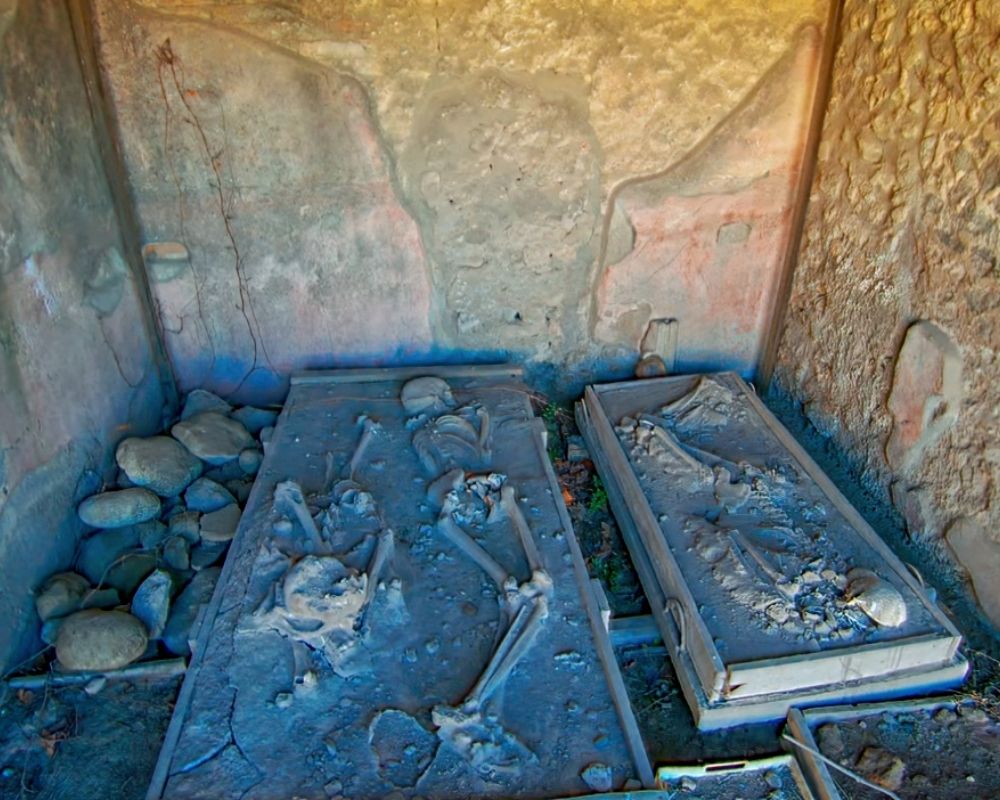
These remains offer insight into health, diet, and even social status. Scientists have pieced together the faces and lives of Pompeii’s people, bringing their stories to light. It’s both sobering and fascinating — a reminder that history is made up of individuals with hopes and fears, just like us.
Secrets Beneath the Ash
Beneath Pompeii’s volcanic burial lie secrets still being uncovered. Hidden rooms, tunnels, and even entire villas to emerge, adding depth to our understanding of the city. Recent discoveries include intact mosaics, mysterious inscriptions, and new insights into daily life.
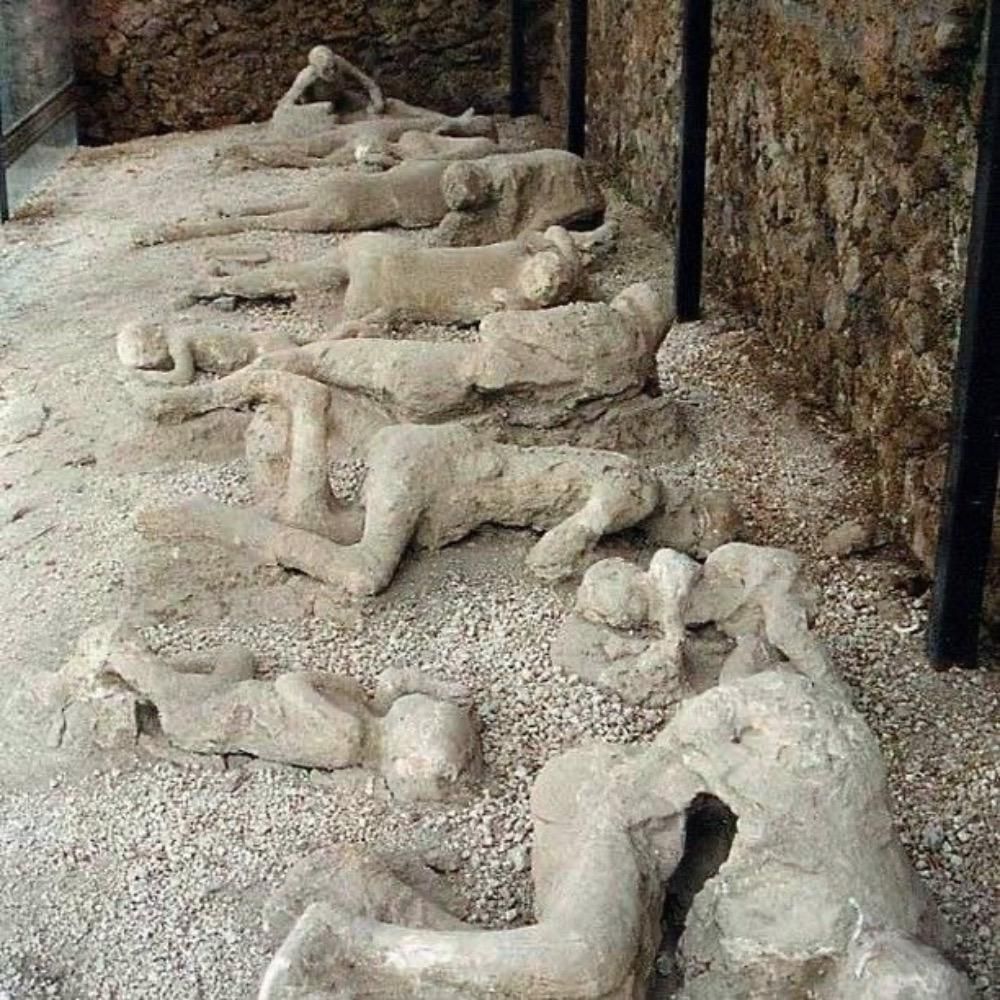
Each find feels like solving a puzzle frozen in time. The ash preserved not only structures but also the essence of Pompeii’s culture. As archaeologists dig deeper, the city’s story keeps growing, proving that history is far from finished revealing itself.
Theories About Pompeii’s Fall
Pompeii’s sudden destruction has fueled countless theories over the years. Was the eruption preceded by warnings the residents ignored? Could the tremors leading up to the disaster have been more significant than originally thought? Some even speculate that poor decision-making contributed to the high death toll.

While Vesuvius’s eruption was undoubtedly catastrophic, debates about how prepared the city was — or wasn’t. Ultimately, Pompeii’s fall reminds us of nature’s immense power and humanity’s tendency to believe, “It won’t happen to us.”
Pliny’s Eyewitness Account
Pliny the Younger’s letters offer the only known eyewitness account of Vesuvius’s eruption. Writing to historian Tacitus, he described the ominous ash cloud, panicked evacuations, and the terrifying power of the volcano. His vivid words bring the disaster to life, capturing both the awe and horror of the event.
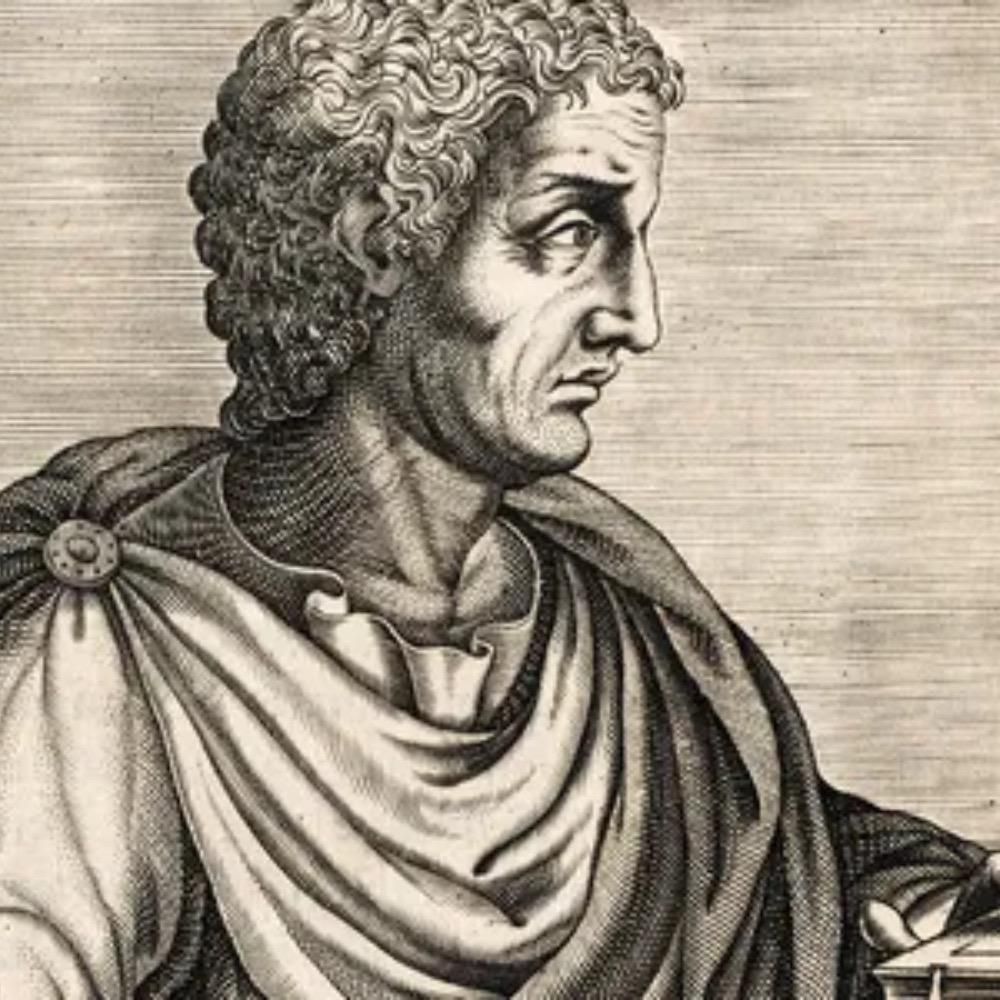
Pliny’s descriptions, like the infamous “pine tree” shape of the eruption, provide critical clues for historians and volcanologists. His ability to detail chaos with such clarity is impressive — though one can imagine him thinking, “This will make an excellent letter someday.”
Archaeological Techniques in Pompeii
Excavating Pompeii has transformed from the early days of treasure hunting into a science-driven endeavor. In the past, diggers prioritized finding artifacts to adorn royal collections, often causing significant damage. Today, modern archaeology emphasizes preservation and understanding, using advanced tools like 3D imaging and ground-penetrating radar to explore the city without disrupting its fragile remains.
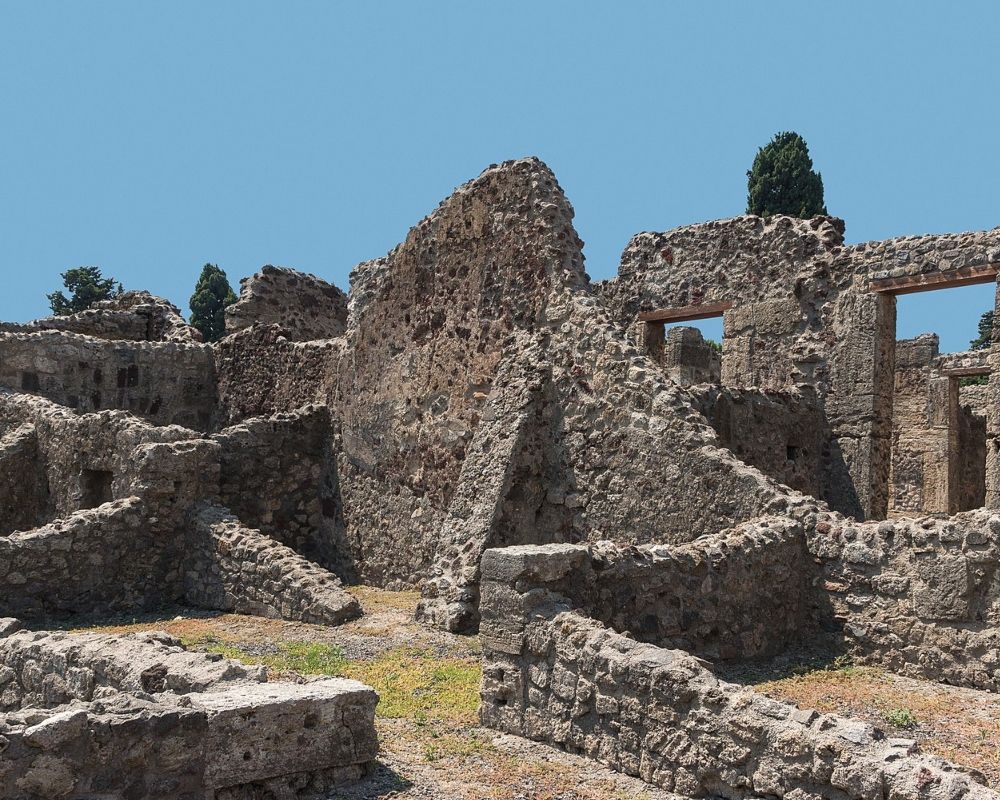
From restoring vibrant frescoes to analyzing carbonized food, archaeologists now uncover stories rather than just treasures. Each ash-covered layer peeled back reveals a new chapter of Pompeii’s daily life, turning the site into a living classroom for understanding ancient Roman culture and ingenuity.
Pompeii’s Global Significance Today
Pompeii isn’t just an archaeological site; it’s a symbol of resilience and discovery. Millions of visitors from around the world walk its ancient streets annually, marveling at the preserved city frozen in time. It’s a place where history feels tangible, offering lessons about life, death, and human ingenuity.
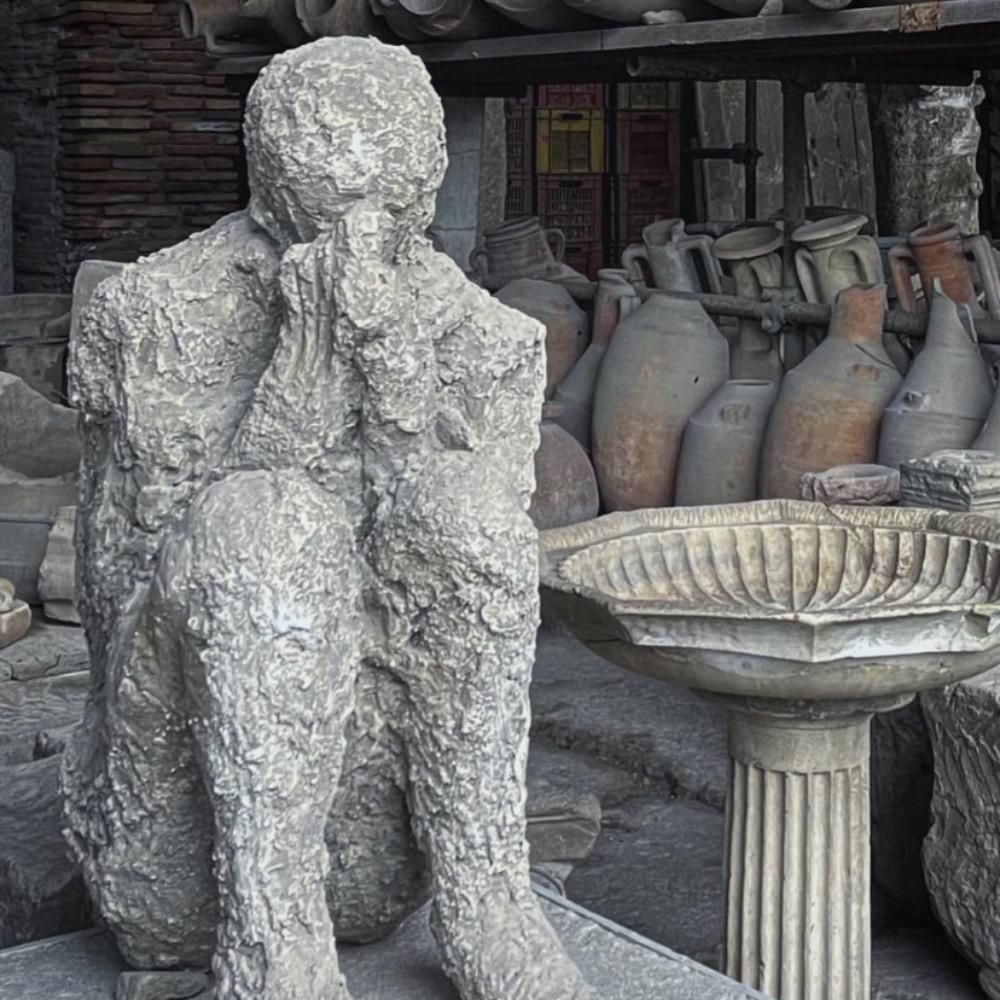
Its ruins inspire art, literature, and scientific study, bridging the gap between ancient and modern worlds. Pompeii’s global significance lies not just in its tragedy, but in its ability to connect us with the past in a uniquely intimate way.
Tourism and Preservation Efforts
Tourism breathes life into Pompeii, drawing millions of visitors eager to walk its ancient streets. However, this popularity comes at a cost, with the constant foot traffic accelerating wear and tear on fragile artifacts and structures. To address this, preservation experts employ innovative strategies, balancing public access with the site’s long-term protection.

Efforts include limiting visitor numbers, creating designated paths, and utilizing advanced conservation technologies. It’s a careful dance — ensuring tourists can experience Pompeii’s wonder while preventing its priceless history from being eroded by time and attention. The goal is clear: to preserve this treasure for generations yet to come.
The Herculaneum Connection
Pompeii often overshadows Herculaneum, its smaller yet wealthier neighbor also entombed by Vesuvius’s fury. While Pompeii captures the public imagination, Herculaneum offers equally remarkable insights, with better-preserved structures and rare organic materials like wooden furniture and stored food, giving a more intimate glimpse into Roman life.
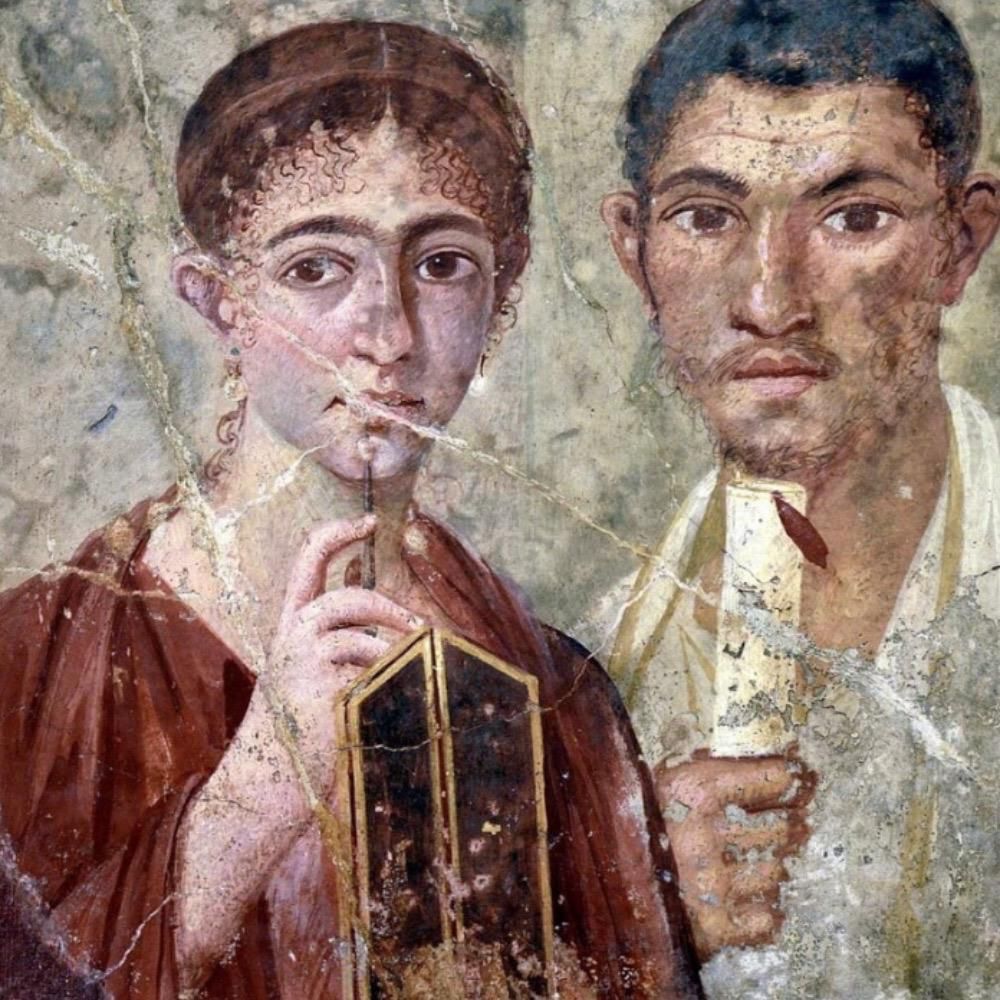
Together, these cities complement one another, painting a richer picture of life before the eruption. They reveal a spectrum of wealth, culture, and daily routines, proving that even privilege could not shield Herculaneum’s residents from the catastrophic power of Mount Vesuvius. Both stand as haunting reminders of nature’s indiscriminate force.
Comparisons to Other Buried Cities
Pompeii’s fame often draws comparisons to other buried cities like Herculaneum and Akrotiri in Santorini. Each tells a unique story, shaped by the volcanic eruptions that preserved them in time. While Pompeii reveals a bustling Roman city frozen in its final moments, Akrotiri showcases an advanced Bronze Age civilization with intricate urban planning.
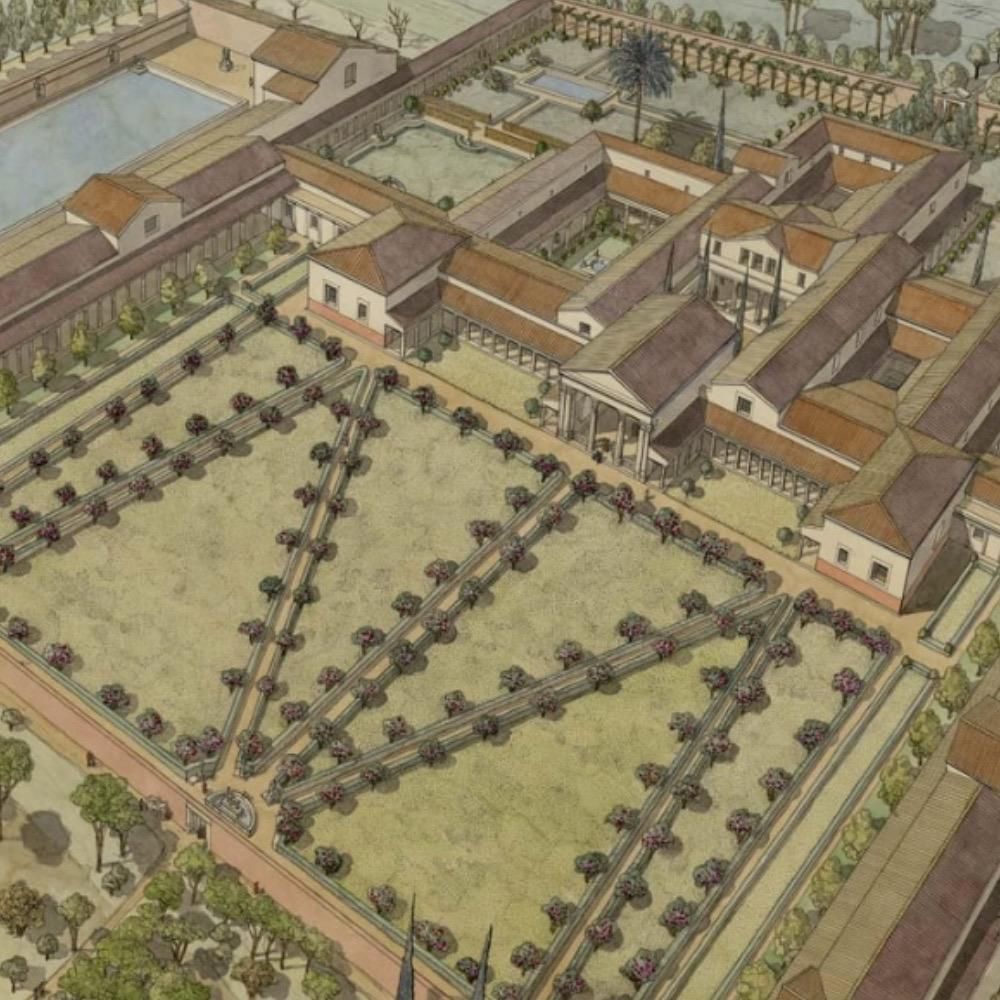
These sites highlight how nature’s destructive fury can paradoxically become an archaeologist’s most valuable ally. The similarities and differences between these ancient cities provide a broader understanding of how societies lived, evolved, and adapted — or failed to adapt — to the unpredictable forces of nature.
Pompeii’s Impact on Modern Art
Pompeii has been a muse for centuries, inspiring artists, writers, and filmmakers. Its ruins sparked a wave of neoclassical art in the 18th century, with frescoes and sculptures influencing European design. Even today, Pompeii appears in literature, movies, and contemporary art.
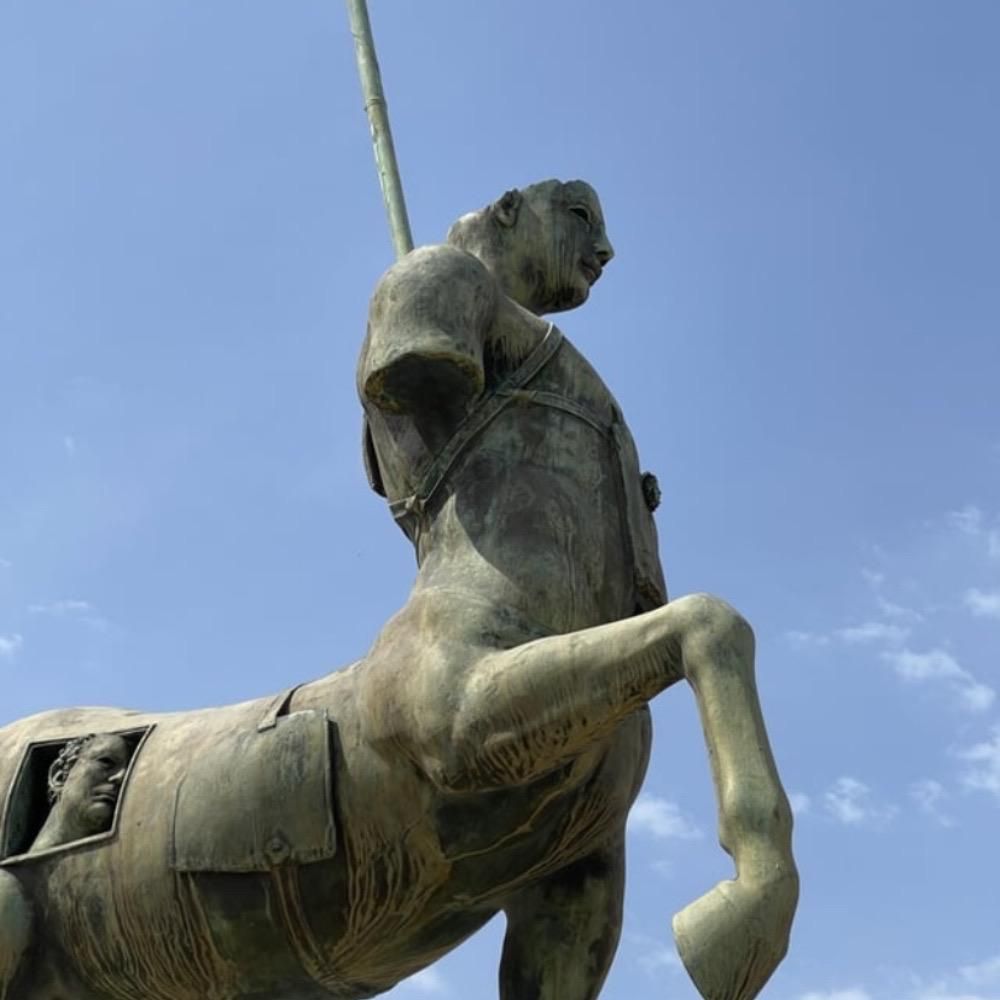
The city’s haunting beauty and frozen-in-time tragedy captivate creatives, serving as a reminder of life’s fragility. From romantic paintings to modern TV shows, Pompeii’s story continues to shape artistic expression worldwide.
New Discoveries Changing Perspectives
Pompeii isn’t done revealing its secrets. Recent discoveries, from newly unearthed frescoes to untouched streets, have reshaped our understanding of the city. Advances in technology have allowed researchers to uncover details about diet, health, and even Pompeii’s environment.
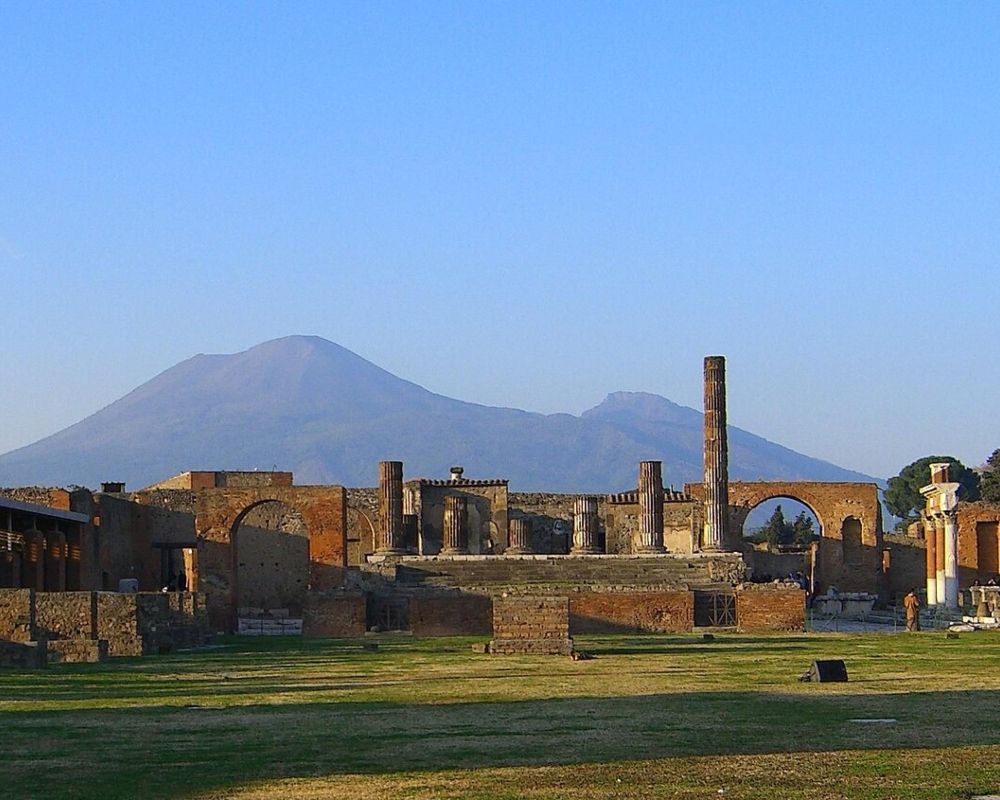
Each new find feels like solving another piece of the ancient puzzle. As archaeologists dig deeper, they challenge old assumptions and add new chapters to Pompeii’s story, proving that even 2,000 years later, history is still alive.
Future Excavations of Pompeii
Future excavations in Pompeii promise even more fascinating revelations and insights. With much of the city still buried, archaeologists are eager to explore untapped areas using advanced tools like drones and 3D mapping.
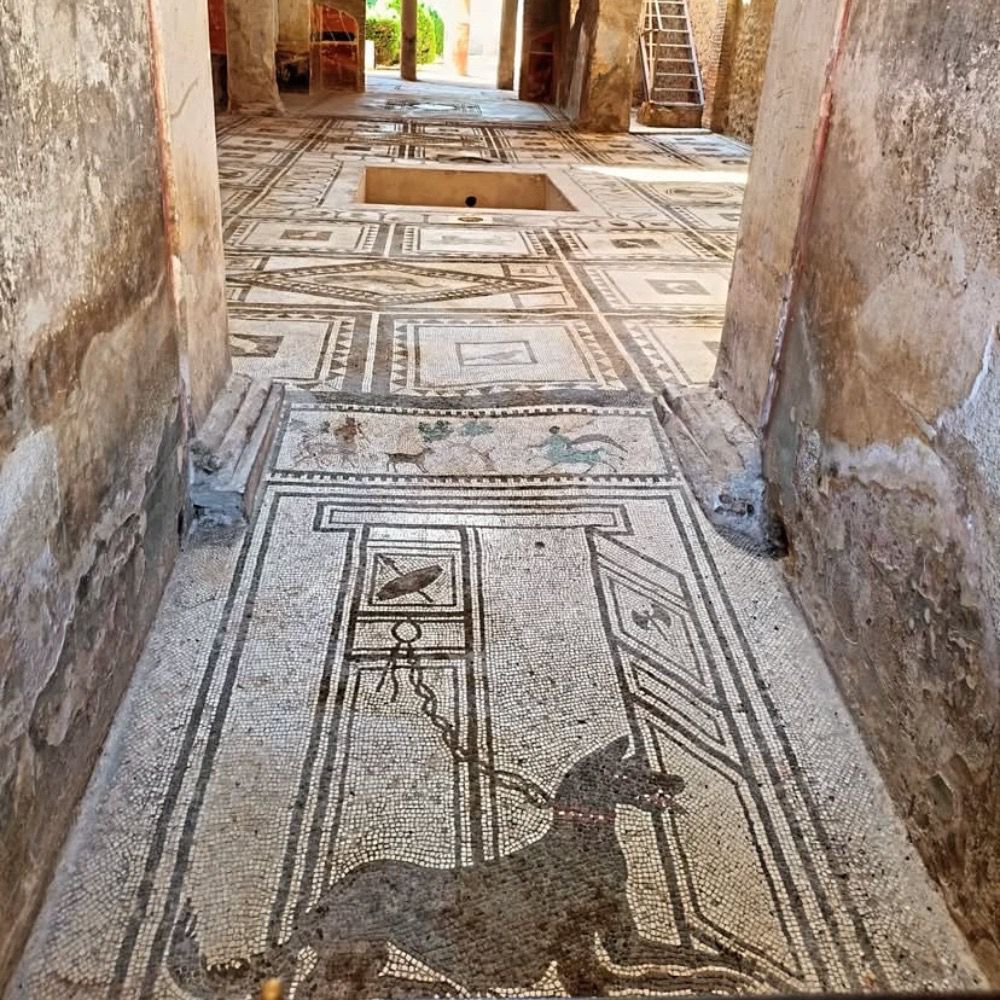
These excavations aim to uncover not just structures, but also the lives and stories of Pompeii’s people. The anticipation is palpable — what secrets might still lie hidden beneath the ash? Whatever they find, one thing is certain: Pompeii’s story, layered with mystery and intrigue, is far from over.
Lessons From Pompeii’s Tragedy
Pompeii’s tragic end is a sobering reminder of nature’s unpredictable power. The city’s demise highlights the importance of heeding environmental warnings, like the tremors that preceded Mount Vesuvius’s eruption. Today, it serves as a case study for disaster preparedness and the consequences of ignoring early signs.
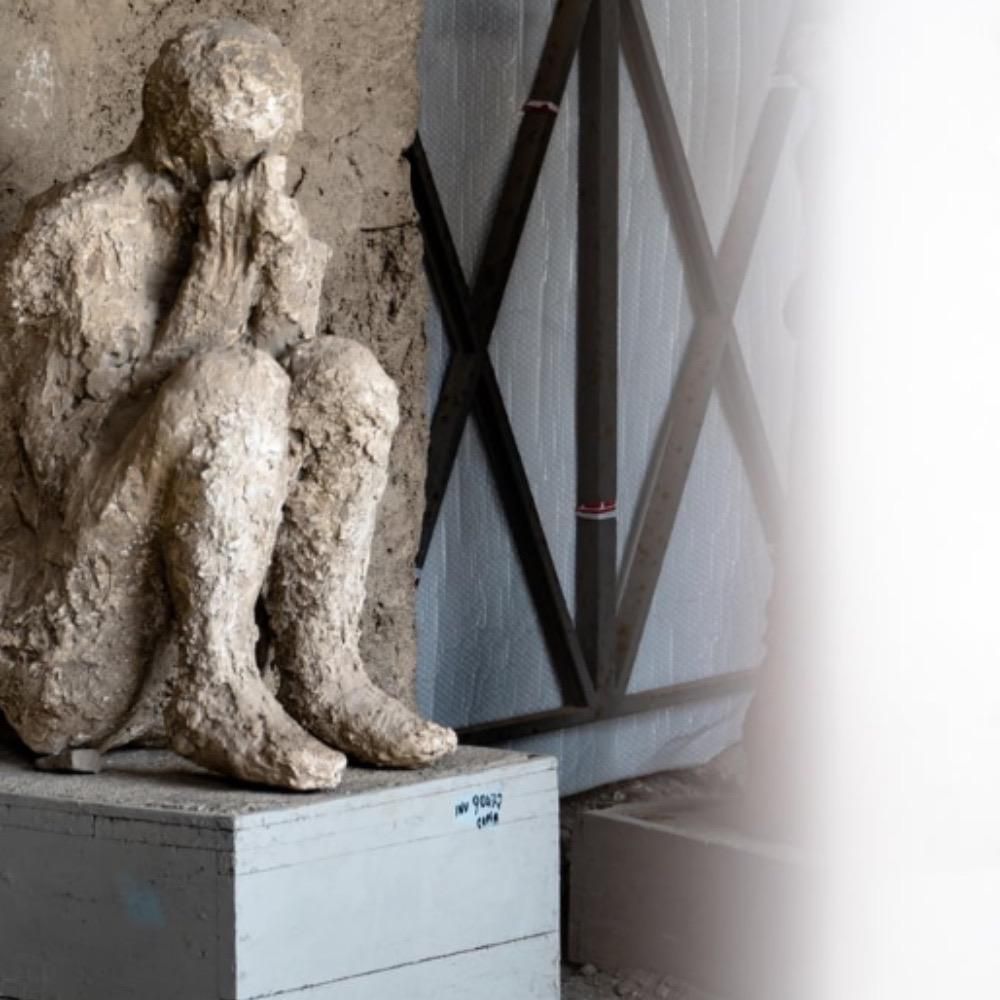
Beyond the scientific lessons, Pompeii also teaches us to value the present. Its preserved streets and homes offer a poignant glimpse into lives lived fully — right until the end. It’s a reminder to embrace each day, even as we respect the forces beyond our control.
Pompeii: A City Remembered
Pompeii is more than a ruined city; it’s a symbol of human resilience and curiosity. From its vibrant streets to its haunting casts, the city remains a vivid testament to ancient life. Its rediscovery sparked worldwide fascination, transforming it into one of history’s greatest archaeological wonders.
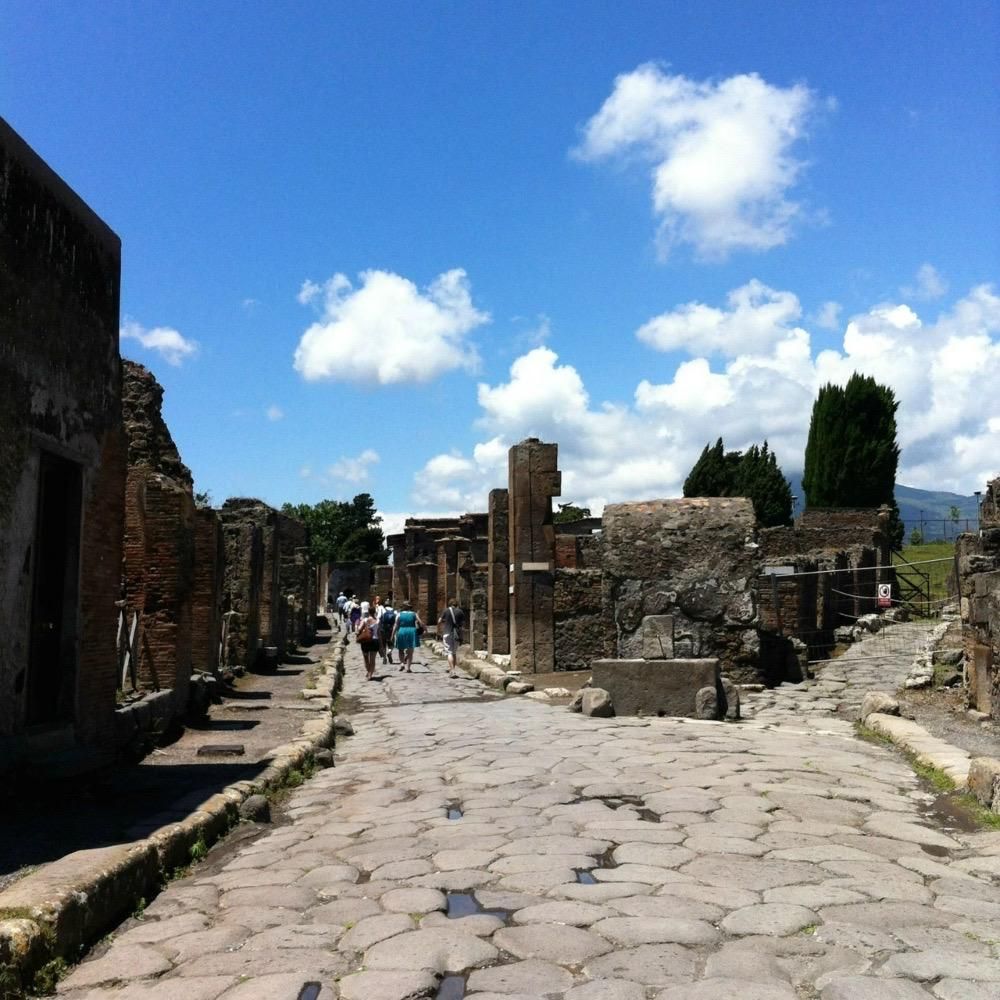
Every stone and artifact tells a story, connecting us to the lives of those who walked its streets over 2,000 years ago. Pompeii isn’t just remembered — it’s celebrated as a bridge between the ancient and modern worlds, keeping history alive in the most extraordinary way.
Leave a Reply